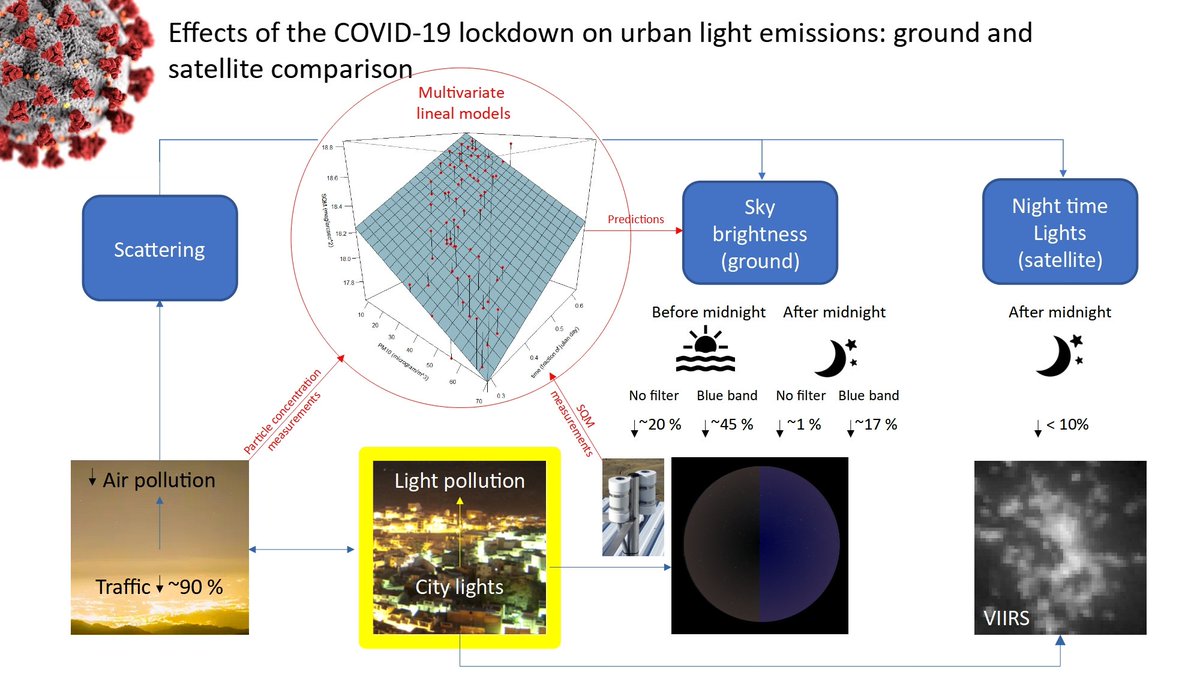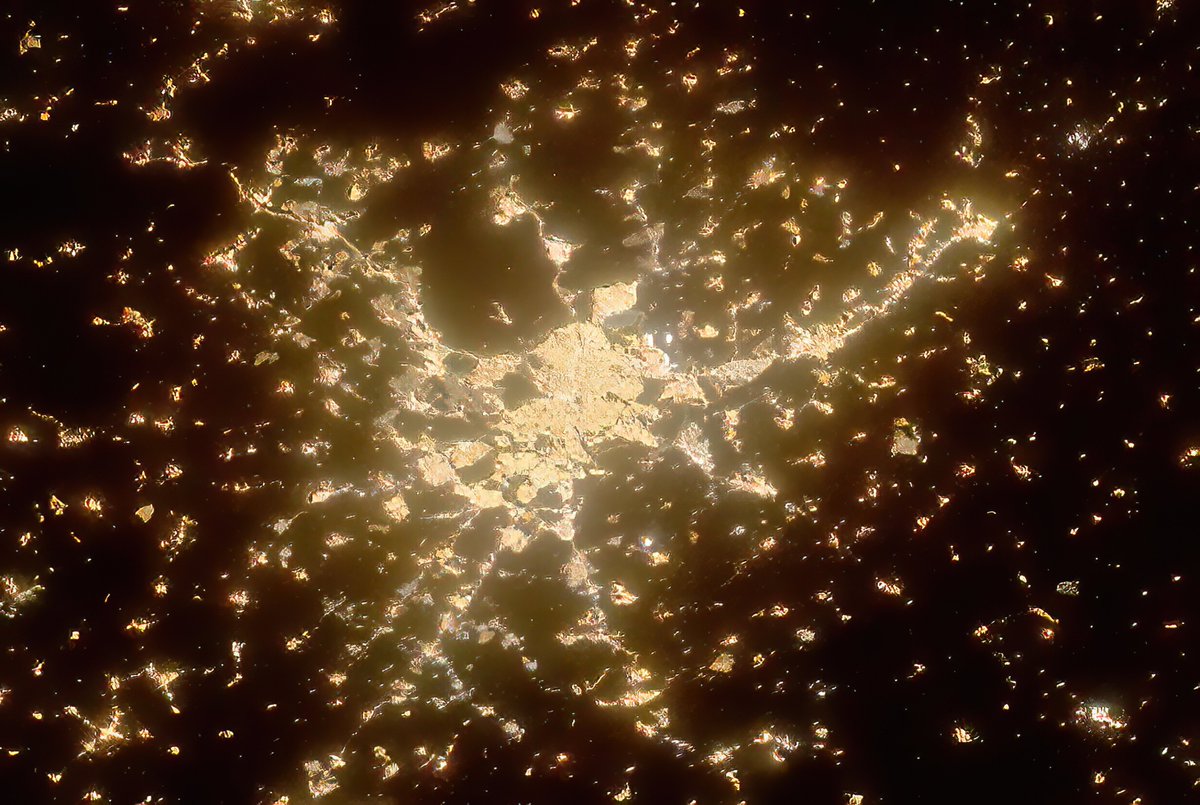
New paper about COVID-19 effects in #lightpollution
mdpi.com/2072-4292/13/2… Leaded by Maximo Bustamante @iaa_csic with the participation of @cefalopodo @KevinJGaston @jvm22811194 @AliciaPelegrina @jon_bennie and myself. Theard:👇
mdpi.com/2072-4292/13/2… Leaded by Maximo Bustamante @iaa_csic with the participation of @cefalopodo @KevinJGaston @jvm22811194 @AliciaPelegrina @jon_bennie and myself. Theard:👇

This is the first article produced with the SQM with filters of the Sky Quality Office of the @iaa_csic iaa.csic.es/page/starlight
The most important things are:
* Light pollution can be used to trace economic activity drop because of COVID-19
* Several limitations on current satellite, mainly because of their flyby time and lack of spectral sensitivity.
*That can be solved with ground sky brighntess sensors
* Light pollution can be used to trace economic activity drop because of COVID-19
* Several limitations on current satellite, mainly because of their flyby time and lack of spectral sensitivity.
*That can be solved with ground sky brighntess sensors
* No much light pollution reduction after midnight.
* Big light pollution reduction in early hours.
* Chemical and light air pollution are heavily correlated.
* Big light pollution reduction in early hours.
* Chemical and light air pollution are heavily correlated.
The high lights for me of the article are:
even if human activity dropped to nearly 0 after midnight, no significant light pollution reductions happened. Except, those because of the reduction of chemical air pollution (light pollution is ALSO air pollution).
even if human activity dropped to nearly 0 after midnight, no significant light pollution reductions happened. Except, those because of the reduction of chemical air pollution (light pollution is ALSO air pollution).
This can be seen on the VIIRS VNP46A1 images and the @eogatpayne images. (Check this to know how to use properly these daily images VNP46A2
https://twitter.com/USRA_Roman/status/1323763788160487424?s=20). Monthly here: payneinstitute.mines.edu/eog/
To visualize it we created this web app: pmisson.users.earthengine.app/view/covid-19 

On of the relevant topics of the paper is a comparison with other papers like:
mdpi.com/2072-4292/12/1…
mdpi.com/2072-4292/12/2…
mdpi.com/2072-4292/13/1…
mdpi.com/2072-4292/12/1…
...
mdpi.com/2072-4292/12/1…
mdpi.com/2072-4292/12/2…
mdpi.com/2072-4292/13/1…
mdpi.com/2072-4292/12/1…
...
...that have not considered the effects of the time of acquisition of VIIRS and the LED effects on this datasets.
The LEDs can produce a "fake" reduction of 50%.
The LEDs can produce a "fake" reduction of 50%.
We did create another web app to show locations where this effect can be seen in Spain.
pmisson.users.earthengine.app/view/covid-19o…
pmisson.users.earthengine.app/view/covid-19o…
The other main result that we find in the article is that the particles of air pollutants seem to be the main contribution to light pollution. Same seen before by our Berlin colleagues: mdpi.com/2072-4292/12/2… @AndreasJechow and Franz Hölker
But we also see a significant reduction of the light, (mainly blue light) in the first part of the night when VIIRS cannot see!!! 

This effect is normal in Granada because of its very important tourism sector that was completely stopped during the lockdown. Here and ISS images from the @cities4tnight project of the normal daily early vs late emissions of Granada. 

Here you can see other the sky brightness differences between the lockdown and no lockdown sky brightness variations. The jumps correspond to the partial turn of the A-44 highway at 00:00 and at 2:00 Alhambra and other monuments. 

Another of the issues that we note on the paper is the relevance of the angle as can be seen on these plots. The Nevada commercial center that was lighted all the time at night is not visible on most of the images. 

We did a human visual inspection of the turn-off of the monuments of Granada thanks to the @aytogr That also contributed to the study with the chemical air pollution data. 



Also thanks to @PoliciaGr @Policia_Granada for their help with the acquisition of the human vision images.
unroll @threadreaderapp
• • •
Missing some Tweet in this thread? You can try to
force a refresh






